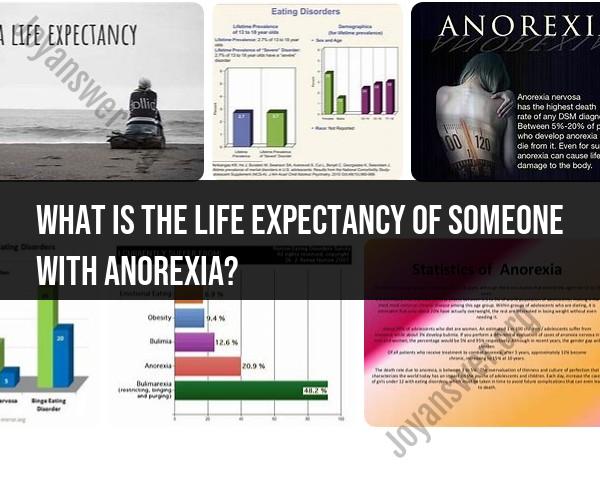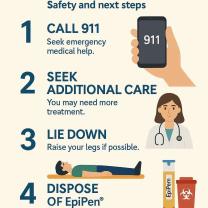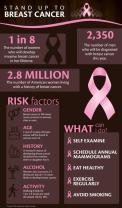What is the life expectancy of someone with anorexia?
I am not a healthcare professional, but I can provide some general information. It's important to note that the life expectancy of someone with anorexia nervosa can vary widely based on individual factors, including the severity of the disorder, the presence of comorbid conditions, and the response to treatment.
Anorexia nervosa is a serious mental health condition characterized by an intense fear of gaining weight, leading to restrictive eating and other behaviors aimed at achieving excessive thinness. The disorder can have severe physical and psychological consequences.
Health risks associated with anorexia nervosa include:
Nutritional Deficiencies: Malnutrition and deficiencies in essential nutrients can lead to a range of health problems, affecting the heart, bones, and other organs.
Cardiovascular Complications: Anorexia can result in heart-related issues, including low heart rate, low blood pressure, and electrolyte imbalances, which may contribute to cardiac complications.
Bone Health: Osteoporosis and bone density loss are common in individuals with anorexia, increasing the risk of fractures.
Gastrointestinal Problems: Anorexia can lead to gastrointestinal issues, such as constipation and digestive problems.
Hormonal Disturbances: Irregular menstrual cycles and hormonal imbalances are common in females with anorexia, which can impact reproductive health.
Psychological Effects: Anorexia nervosa is associated with psychological challenges, including depression, anxiety, and an increased risk of suicide.
Due to the complexity of anorexia nervosa and its impact on both physical and mental health, predicting life expectancy can be challenging. Early intervention, appropriate treatment, and ongoing support are crucial in improving outcomes for individuals with anorexia. Seeking professional help from healthcare providers, including mental health specialists and nutritionists, is essential for a comprehensive approach to treatment.
If you or someone you know is struggling with an eating disorder, it's important to reach out to healthcare professionals for guidance and support. They can provide an accurate assessment of the individual's health status and recommend appropriate interventions and treatment options.
Anorexia nervosa is a serious eating disorder with a significant impact on life expectancy and overall health. Here's a breakdown of your questions:
1. Life expectancy:
Individuals with anorexia have a 5-16 times higher risk of death compared to the general population. It's estimated that up to 20% of people with anorexia may die as a result of the disorder.
2. Health impact:
Anorexia affects nearly every organ system in the body, leading to:
- Malnutrition: Severe nutrient deficiencies, muscle wasting, and fatigue.
- Electrolyte imbalances: Can lead to irregular heartbeat, heart failure, and even death.
- Bone loss: Increased risk of osteoporosis and fractures.
- Gastrointestinal problems: Constipation, bloating, and acid reflux.
- Reproductive issues: Irregular or absent periods, infertility, and decreased libido.
- Mental health problems: Depression, anxiety, and OCD are common comorbidities.
3. Influencing factors:
- Severity and duration of the disorder: Early diagnosis and treatment significantly improve prognosis.
- Presence of medical complications: Complications like heart problems or infections can worsen outcomes.
- Mental health co-occurrences: Depression or anxiety can make recovery more challenging.
- Socioeconomic factors: Access to treatment and support can impact recovery.
4. Early intervention:
Early intervention and comprehensive treatment are crucial for improving prognosis. This includes:
- Nutritional therapy: Restoring healthy eating habits and weight gain.
- Psychotherapy: Addressing underlying psychological issues and negative body image.
- Medication: Sometimes used to manage co-occurring mental health conditions.
Early intervention can significantly improve recovery rates and reduce the risk of complications and death.
5. Medical complications:
Long-term anorexia can lead to various life-threatening complications, including:
- Heart problems: Arrhythmias, heart failure, and even sudden death.
- Kidney failure: Due to dehydration and electrolyte imbalances.
- Liver damage: Malnutrition and inflammation can damage the liver.
- Gastrointestinal problems: Perforated ulcers, pancreatitis, and even death.
- Sepsis: Increased risk of infections due to weakened immune system.
- Bone fractures: Osteoporosis and low bone density increase fracture risk.
Remember: Anorexia is a serious and potentially fatal illness. Early diagnosis and treatment are crucial for improving prognosis and preventing life-threatening complications. If you or someone you know is struggling with anorexia, please seek professional help immediately.
Here are some resources that can help:
- National Eating Disorders Association (NEDA): https://www.nationaleatingdisorders.org/
- Anorexia Nervosa and Associated Disorders (ANAD): https://anad.org/
- National Institute of Mental Health (NIMH): https://www.nimh.nih.gov/health/topics/eating-disorders/index.shtml
I hope this information helps!













